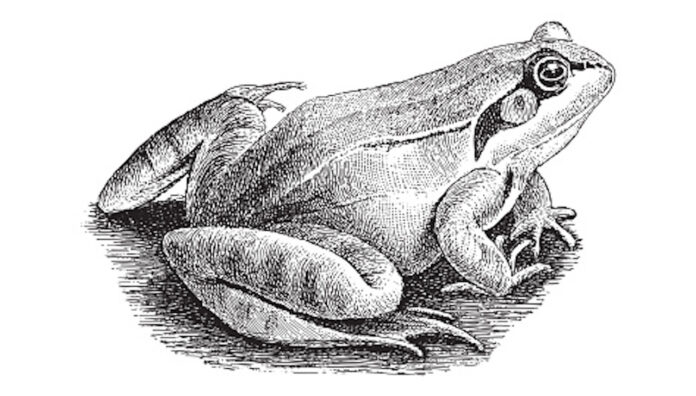Peculiar potions, potent plagues and powerful penicillin – syphilis inspired it all.
From 1493 onwards, everyone who was anyone caught syphilis. Ivan the Terrible, Henry VIII, Friedrich Nietzsche, Gauguin, Keats, Oscar Wilde, Beethoven, Manet and Al Capone all allegedly picked up the disease. Given that the ‘Great Pox’ was a known venereal disorder, it is no surprise Casanova also made the ever-growing list.1
What’s in a name
Not only did syphilis chalk up many famous names, it had numerous names itself. Many were based on the country or people blamed for spreading it. For instance, the English and Italians called it the ‘French disease’, whereas the French called it the ‘Spanish disease’.2 It wasn’t until 1530 that the name syphilis emerged thanks to Italian poet, mathematician and physician Girolamo Fracastoro’s Latin poem Syphilis. Apparently, Syphilis, a shepherd, offended Apollo, who took revenge by creating a hideous disease.1-3
Origin stories
The source of Apollo’s curse has triggered arguments since it appeared in Western Europe in the late 15th century. Did Christopher Columbus bring the scourge from the New World to Spain in 1493? Was it a virulent variant of an Old World pestilence like yaws?1-5 The answer may be ‘a bit of both’. There is solid evidence that syphilis began its global spread when Charles VIII of France attacked Naples in 1494. Troops on both sides included Spanish mercenaries … and prostitutes. When the French retreated, as Voltaire wrote, ‘syphilis went with them’.
There is also support for a truly old Old World origin. Examination of skeletons suggests the ancestor of syphilis and Old World diseases like yaws and bejel spread from Africa through Asia to North America, where about 8 million years ago it evolved into syphilis.
A very nasty microbe
Like its disease cousins, syphilis is caused by Treponema – spiral-shaped bacteria called spirochetes. But each of the diseases has different symptoms. Bejel (Treponema pallidum endemicum) causes mouth sores and destructive bone lumps. Yaws (T. pallidum pertenue) causes skin sores and disfiguring growths on the legs, nose and mouth.7 And syphilis (T. pallidum) begins with genital sores, which heal, only to be followed by fever, rash, aches, bone pain at night and genital warts. The final phase consists of disfiguring abscesses, ulcers and debility, even madness or death.
Early treatments for syphilis were as outrageous as its symptoms: flayed pigeons and frogs applied to an infected penis, blood-letting and suffocating steam baths.2,4 The first elixir was a purgative made from guaiacum, a New World tree. It was ineffective, so mercury-based products dominated until the 20th century, despite dangerous and painful adverse effects.2-4,9-11
- Tampa M, Sarbu I, Matei C, et al. Brief history of syphilis. J Med Life 2014;7(1):4–10.
- Frith J. Syphilis – its early history and treatment until penicillin and the debate on its origins. JMVH 2012;28(4).
- The Oregon Health & Science University Library. Historical Collections & Archives. Mercury, marriage, and magic bullets: four centuries of STD prevention and treatment. 2016.
- Parascandola J. From mercury to miracle drugs: syphilis therapy over the centuries. Pharm Hist 2009;51(1):14–23.
- Harper KN, Zuckerman MK, Harper ML, et al. The origin and antiquity of syphilis revisited: an appraisal of Old World pre-Columbian evidence for treponemal infection. Am J Phys Anthropol 2011:146:99–133.
- Rothschild BM. History of syphilis. Clin Infect Dis 2005:40(10):1454–1463.
- Bush LM, Vazaquez-Pertejo MT. Bejel, yaws, and pinta. MDS Manual Professional Version. 2022.
- Knell RJ. Syphilis in Renaissance Europe: rapid evolution of an introduced sexually transmitted disease?. Proc R Soc Lond B (Suppl) 2004;271:S174–S176.
- Eschner K. The first syphilis cure was the first ‘magic bullet’. Smithsonian Magazine 2017.
- Eppenberger P, Galassi F, Rühli F. A brief pictorial and historical introduction to guaiacum – from a putative cure for syphilis to an actual screening method for colorectal cancer. Br J Clin Pharmacol 2017;83(9):2118–2119.
- Evans WC, Evans D. Chapter 22 – Volatile oils and resins. In: Trease and Evans’ Pharmacognosy (Sixteenth Edition). Elsevier Ltd. 2009:263–303.



 John Jones MPS, pharmacist immuniser and owner of My Community Pharmacy Shortland in Newcastle, NSW[/caption]
John Jones MPS, pharmacist immuniser and owner of My Community Pharmacy Shortland in Newcastle, NSW[/caption]


 Debbie Rigby FPS explaining how to correctly use different inhaler devices[/caption]
Debbie Rigby FPS explaining how to correctly use different inhaler devices[/caption]




 Professor Sepehr Shakib[/caption]
Professor Sepehr Shakib[/caption]

 Lee McLennan MPS[/caption]
Lee McLennan MPS[/caption]
 Dr Natalie Soulsby FPS, Adv Prac Pharm[/caption]
Dr Natalie Soulsby FPS, Adv Prac Pharm[/caption]
 Joanne Gross MPS[/caption]
Joanne Gross MPS[/caption]








